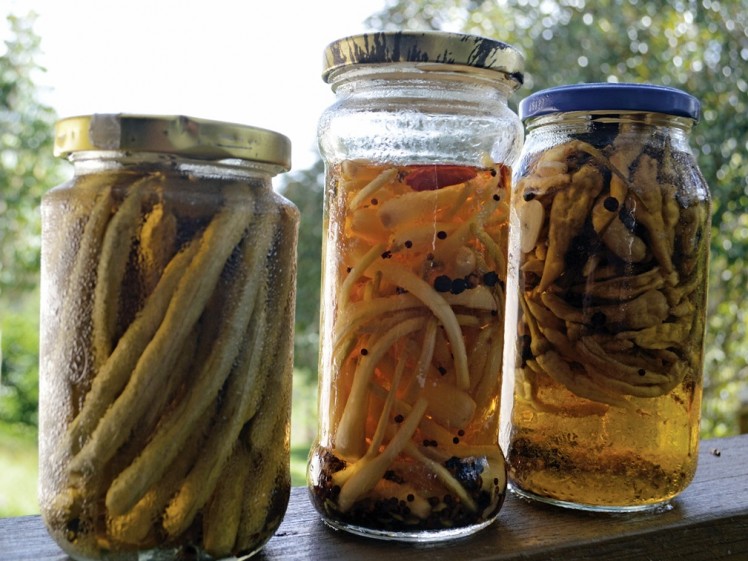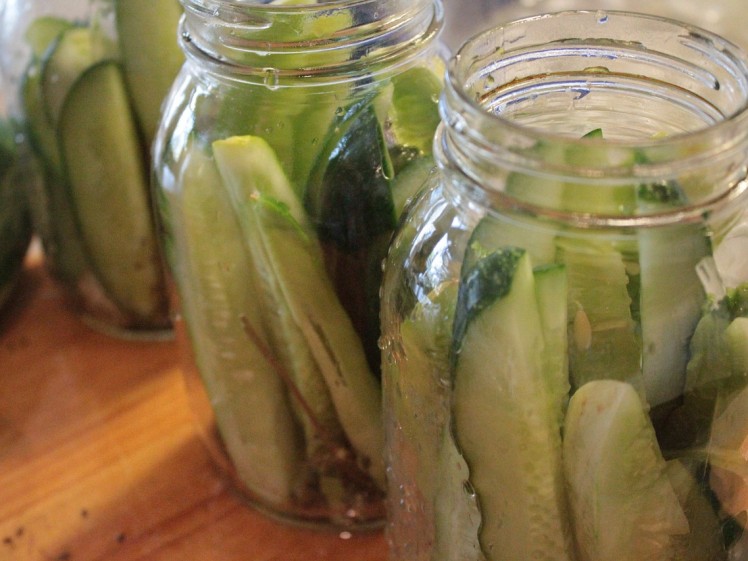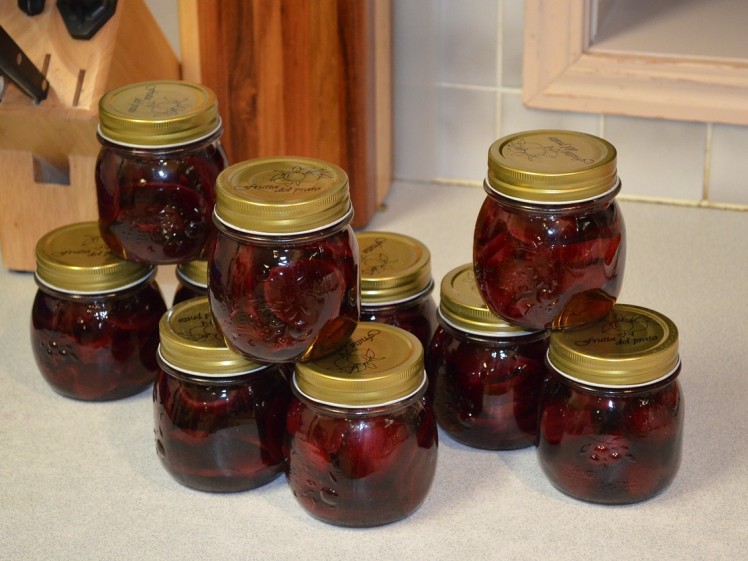If you want to try your hand at pickling some of the many superb vegetables and fruits available in Malaysian markets, Alex Sorenson has a number of tips to help get you started on this easy and satisfying kitchen staple.
Pickling is an easy skill often overlooked in home kitchens, but worth adding to your arsenal. It requires almost no time, is a great way to put food to use you might otherwise waste, and makes a versatile addition to your pantry. The next time you have friends over for cocktails, a plate of assorted home pickles will be sure to impress.
Pickling traditionally developed as a means of preserving the excess bounty of harvest. Though this isn’t as important in the modern home kitchen, it is useful for saving produce you might not get around to cooking, and for transforming items you might not otherwise use. If you try a new fruit or vegetable from the market that you don’t love, or can’t figure out what to do with, try pickling it and using it in a salad.
There are two basic types of pickling: the quick pickle, and the fermented pickle. Quick pickling is the easiest and fastest, while fermentation requires longer and a bit more attention to the process, but can yield more interesting and complex results.
Fermentation is the traditional method of pickling, and entails covering the vegetables in a salt brine for weeks or months. The brine creates an ideal environment for certain bacteria that naturally occur on the skin of vegetables, which then form lactic acid, killing any potentially harmful bacteria. The combination of the salt and lactic acid give the pickle its sour taste and also keeps it from spoiling.
The quick pickle method shortens the process by using vinegar instead of waiting for the lactic acid to naturally occur. This process is as easy as bringing a brine of vinegar, salt, water, and sugar to a boil, pouring it over the vegetables and allowing it to sit for a few hours or days. You can even make a large batch of brine ahead, and keep it in a jug at room temperature ready for whenever you need pickle something.
In addition to the common cucumber pickles, almost any vegetable is fair game: asparagus, beets, okra, beans, cabbage, carrots, cauliflower, onions, chili peppers. Most fruits also take to pickling: apples, mango, tree tomatoes, watermelon rinds, lemons, papaya, longsat, rambutan, pineapple, berries. Spices and flavorings are usually added to the brine, and while the traditional pickling spices include some combination of bay leaves, mustard seed, black pepper, coriander, cloves, cinnamon, allspice, cardamom, and chili, feel free to come up with your own combinations that complement the produce – garlic, ginger, turmeric, and star anise are great additions.
Fermented Pickles
• 2 kg cucumbers (or other vegetable)
• 6 cloves garlic, peeled and crushed
• 4 bay leaves
• 2 tablespoons pickling spices (mustard seed, coriander, black pepper, all spice)
• 6 tablespoons salt
• 2 liters water
Rinse the cucumbers (or other vegetable) and place in glass, ceramic or plastic containers, along with the garlic, bay leaves and spices. Bring the salt and half a liter of the water to a simmer. Combine with the rest of the water, and pour over the cucumbers. If you are pickling in jars, make sure the cucumbers are covered with liquid, but leave a bit of airspace at the top before putting the lid on. If you are fermenting in a larger container, you may need to place a plate or other object on top of the pickles to keep them submerged before putting the lid on. Place in a cool dark place for about two weeks. After one week, open the container briefly to “burp” it – allowing the built-up gas to escape. Taste your pickles to determine if they are ready – they will continue to get more sour over time. When you are happy with their taste, move them to the refrigerator, which slows the fermentation process by way of cold temperatures.
Quick Pickles
• 1 kg vegetable or fruit
• 300 ml rice wine vinegar (red wine, white wine, apple cider, and coconut vinegar are also good)
• 200 ml water
• 100 ml sugar
• 1 ½ tablespoons salt
Spices (a small pinch of black pepper, 4 star anise, 6 cloves garlic, 2 bay leaves, a teaspoon of mustard seeds, pinch of coriander seeds, and 5 dried red chili peppers)
Rinse the fruits or vegetables and place in glass, ceramic, or plastic containers. Bring all of the other ingredients to a boil. Pour the boiling brine over the pickles-to-be, put the lid on and place in the refrigerator. Wait a day (more or less, see below), then enjoy. Depending on the produce you are pickling, there are a few slight variations. Dense vegetables (carrots and cauliflower) benefit from cooking a bit in the brine to help soften them, so just add them to the pot and bring them to a boil with the brine. Conversely, delicate vegetables and most fruits will retain more crunch and texture if you allow the brine to cool before pouring it over them. Similarly, the time necessary to pickle will vary with their density – softer vegetables like onions and beans and almost all fruit will be ready in an hour or so, while dense vegetables will require a few days to become fully pickled.
When you have finished your pickles, the brine can be strained, boiled, and reused.Pickle brine is also great in salad dressing and dirty martinis if you need further convincing of its usefulness!
Read This: Get to Know These Malaysian Condiments to Spice Up Your Meal
Source: The Expat Magazine March 2015
"ExpatGo welcomes and encourages comments, input, and divergent opinions. However, we kindly request that you use suitable language in your comments, and refrain from any sort of personal attack, hate speech, or disparaging rhetoric. Comments not in line with this are subject to removal from the site. "


























need to read more comment from friends .. sharing is caring ya !
So how to soak…
I make improvised Russian salted mushrooms, in AEON I buy fresh little mushrooms for about 2.50 and I salt them in a jar!